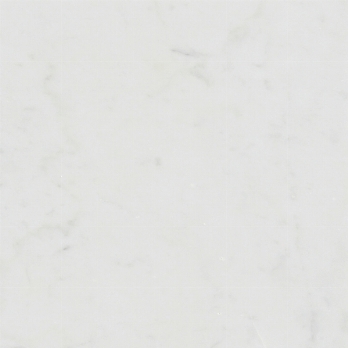Bianco Cararra C Lorano
quarry of origin
Lorano
Carrara, Italy
Petrografic name (according EN 12407): Marble
Macroscopic description: A medium-fine-grained lithotype, pearly white verging on light grey in colour with dark grey veins of a vaguely sub parallel orientation and dark grey patches up to millimetric in size in places. The material is compact and there are no surface pores.
Technical data provides a frame of reference only. As stone is a product of nature, up to date testing to determine specific physical qualities should be repeated for each major project. We decline any responsability for the mis-use of this data, since said data is sourced from the quarry.
Physical mechanical characteristics
| STANDARD | U.M. | MEAN VALUE | ST. DEV. | |
 EN 13755-08 EN 13755-08 |
Water absorption at atmospheric pressure | % | 0,11 | 0 |
 EN 1936-07 EN 1936-07 |
Apparent Density | KG/m3 | 2700 | 0 |
 EN 1936-07 EN 1936-07 |
Open porosity | % | 0,3 | 0,11 |
 EN 12372-07 EN 12372-07 |
Flexural strength | |||
| (in natural conditions) | MPa | 17,2 | 0,9 | |
| (EN 12371-03 exposed to 48 frost cycles | MPa | 14,4 | 0,4 | |
 EN 1926-07 EN 1926-07 |
Uniaxial compressive strength | MPa | 62,3 | 7 |
 EN 14231-04 EN 14231-04 |
Slip resistance (honed finishing) | |||
| (dry) | USRV | 49 | 2,2 | |
| (wet) | USRV | 35 | 1,6 | |
Block and slab characteristics
Average size of blocks: 3,00 x 1,70 x 1,70m.
Slabs are preferably cut against the grain or perpendicular to the grain, i.e. the hard way and the easy way.
 Cutting of blocks
Cutting of blocks  Surface lavoration
Surface lavoration
 Cutting of blocks
Cutting of blocks  Surface lavoration
Surface lavoration
Microscopic description according to EN 12407 e EN 12460
| An isotropic metamorphic lithotype, that is anisotropic where the veins occur. The material is composed of blasts that are subeuhedral and euhedral in the suborder with sutured/linear or rounded grain boundaries of a seriate size (from 50 to 400 μm). There are also millimetric nodules in places composed of larger crystals (500-900 μm) and veins composed of calcitic microblasts (approx. 40 Ám) and rhombic dolomitic blasts clouded by opaque minerals, acicular muscovite, rare poikilitic quartz with inclusions and widespread pyrite microcrystals (< 30 μm). |




